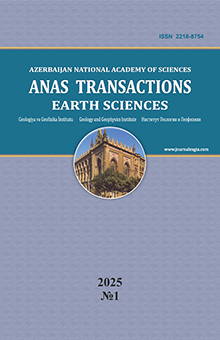Technological basis for the development of gas deposits in a combined mode
Geldimuradov A.G.1, Luryeva I.I.2, Ishangulyyev G.A.1 Luryev I.V.1
1 Yagshygeldi Kakayev International Oil and Gas University, Ashgabat, Turkmenistan: ilyaluryev.edu@gmail.com
2 Scientific-research Institute of Natural Gas under SC “Turkmengas”, Ashgabat, Turkmenistan
Summary
The combined operation mode of deposits allows combining the advantages of gas and water-driven modes. This is an artificial mode that makes it possible to control the development of a field in a water-driven mode with an increase in the final gas recovery coefficient by preventing selective flooding of the drained zone of the field. A technology for creating a combined regime in a flooded gas reservoir is proposed, the physicochemical foundations of the process are investigated, and criteria for the applicability of the technology are identified. An algorithm for calculating the technological indicators of the development of a gas deposit in a combined mode has been compiled. According to the proposed algorithm, in a one-dimensional setting, the processes that can occur during the development of a gas deposit were modelled, according to the characteristics of the productive reservoir, water system, as well as the composition and properties of gas and water, similar to a real field.
Keywords: gas deposit, water drive mode, combined mode
REFERENCE
Лурьева И.И. Современные методы регулирования обводнения газовых месторождений. Efektivni nástroje modernich vĕd-2014. Dil 33, Technické vĕdy. Publishing House “Education and Science” s.r.o. Praha, 2014, с. 3-8.
Лурьева И.И. Способы снижения техногенного воздействия разработки газовых месторождений на окружающую среду. Анализ, прогноз и управление природными рисками в современном мире: материалы 9-й Международной научно-практической конференции «ГЕОРИСК-2015» (14-15 октября 2015 г.): в 2 т. Т.2 2015, с. 240-245.
Лурьева И.И., Мурадов А.Н., Эседулаев Р., Аннамухамедов Д. Способ разработки газового месторождения при водонапорном режиме. 1996. Патент РФ № 2070281.
DOI: 10.33677/ggianasconf20230300032
